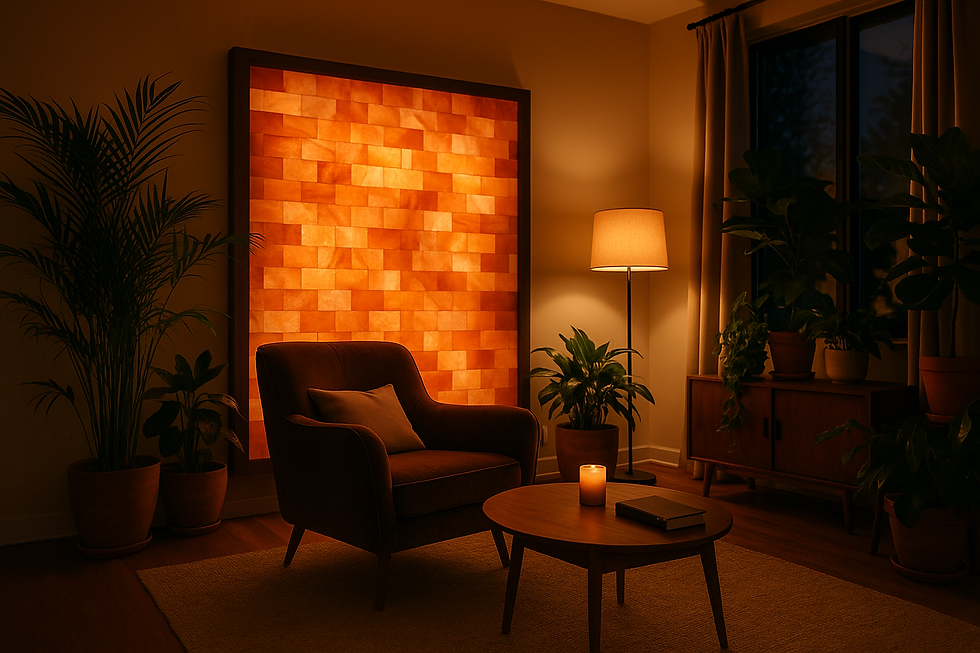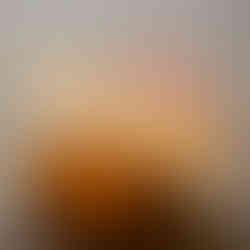Carved from Time: Ancient Origins & Contemporary Uses of Himalayan Salt Bricks
- Selrox
- Aug 19
- 5 min read

Himalayan pink salt has moved far beyond the kitchen table. While many know it in the form of culinary crystals, slabs, or lamps, the material is also shaped into salt bricks—rectangular building units used in wellness centers, architectural design, and luxury interiors. These bricks are quarried from one of the world’s most storied geological sites: the Khewra Salt Mine in Pakistan, a deposit formed hundreds of millions of years ago when ancient seas evaporated, leaving behind thick layers of halite.
Pink salt bricks are valued as much for their aesthetic qualities—translucent colors ranging from pale rose to deep amber—as for their role in spa culture and wellness marketing. However, while their decorative and architectural uses are well-established, some health claims remain contested or unsupported by scientific evidence.
This article explores in depth the origins, exploration, and uses of Himalayan salt bricks, and the facts versus myths surrounding them.
Geological and Historical Origins

The Khewra Salt Mine, located in Punjab, Pakistan, is the second-largest salt mine in the world and the primary source of Himalayan pink salt. The deposit dates back to the Precambrian or early Cambrian era, making the crystals more than 250 million years old. The salt appears in shades from white to deep red due to varying concentrations of iron oxide and other trace minerals.
Mining at Khewra has been documented for centuries, with modern commercial extraction ramping up in the 19th and 20th centuries. Today, the mine is both an industrial hub and a cultural landmark, attracting thousands of visitors annually who tour its illuminated salt caverns.
The Extraction Process

Mining in Khewra is done primarily using the “room and pillar” method, which ensures that large supporting pillars of salt remain in place to stabilize the tunnels. Workers use hand tools and controlled blasting to extract salt boulders while minimizing waste.
Unlike industrial road salt, which can be pulverized in bulk, salt destined for bricks is typically extracted in large, solid slabs. This helps preserve the crystal structure and allows workers to select pieces with desirable color and clarity.
Processing: From Boulders to Bricks

Once extracted, salt boulders are transported to processing facilities near the mine. The production process involves several key stages:
Sorting and Grading
Workers sort by color (light pink, deep orange, or white), translucency, and structural integrity. Flawed or fractured pieces are diverted for crushing into granules, powders, or culinary salt.
Cutting
Large boulders are cut into uniform slabs using diamond-tipped saws or water-cooled cutting machines. Precision is important, as bricks must align perfectly when stacked into walls or panels.
Commonly marketed sizes include:
8" × 4" × 2" – standard construction brick.
8" × 4" × 1" – used for BBQ grills, floors, or decorative facades.
Custom sizes for spa benches, saunas, and artistic projects.
Shaping and Finishing
Salt bricks are smoothed with grinders or polishing belts to ensure straight edges. This step distinguishes construction bricks (with precise edges) from culinary salt blocks, which may retain rougher surfaces.
Drying and Moisture Control
Salt is hygroscopic, meaning it absorbs moisture from the air. To prevent damage during storage and shipping, bricks are dried under low-humidity conditions before being packaged. Some manufacturers also apply thin sealants for bricks destined for humid spaces such as steam rooms.
Packaging and Transport
Bricks are typically shrink-wrapped, cushioned with foam, and packed into wooden crates for export. Labels may indicate size, grade, and intended use. Given their density, careful handling is required to avoid chipped edges during transit.

Architectural and Decorative Applications
Himalayan salt bricks are prized for their warm, glowing aesthetic. Their natural translucency allows them to act as a light-diffusing material when paired with LED systems.
Key applications include:
Salt Walls
Popular in spas, yoga studios, and luxury homes.
Often backlit with LEDs to highlight the salt’s marbled textures.
Serve primarily as an aesthetic feature rather than a structural wall.
Reception Desks and Facades
High-end hotels and offices incorporate salt facades for a sense of natural luxury.
Dining and Hospitality Design
Upscale restaurants sometimes install salt feature walls or partitions to enhance ambiance.
Salt Panels
Pre-assembled panels made of salt bricks mounted on backing boards are now widely sold. These panels simplify installation and reduce the risk of crumbling compared to traditional stacked brick walls.
Flooring and Benches
In some spa settings, salt bricks are laid into the flooring or shaped into benches. However, because salt dissolves in water, these features must be carefully sealed or combined with non-porous materials such as glass or stone bases.

Wellness and Spa Culture
Perhaps the most visible market for pink salt bricks is the wellness industry. Entire rooms, often referred to as salt caves or halotherapy chambers, are built with salt bricks to recreate the ambiance of natural salt mines in Eastern Europe, where halotherapy originated.
In such spaces:
Walls and ceilings are clad in salt bricks.
A halogenerator may disperse fine salt aerosol into the air.
LED backlighting creates a soothing, warm glow.
Artistic and Branding Applications
Salt bricks are soft enough to engrave yet sturdy enough to hold their form, allowing them to be used in:
Custom logos in spas or restaurants.
Sculptural installations for hotels and wellness resorts.
Corporate branding in office reception areas.
This dual role—as both a natural material and a customizable medium—has expanded its adoption in branding and interior design.

Industrial and Culinary Applications
While not the primary focus of the blog, pink salt bricks have also found niche industrial and culinary uses:
Meat-curing rooms: Some butchers line chambers with salt bricks to create antimicrobial surfaces and flavor-enhancing environments. This practice is documented but not widespread.
Cooking blocks: Related to bricks, thicker slabs of Himalayan salt are heated to cook meats or chilled to serve sushi and desserts.
Advantages of Salt Bricks
Aesthetic appeal – distinctive glow and unique coloration.
Versatility – adaptable for walls, panels, benches, counters, and art.
Natural origin – marketed as sustainable and minimally processed.
Cultural cachet – strongly associated with luxury spas and wellness.

Challenges and Maintenance
Despite their appeal, salt bricks require special care:
Must be kept away from water unless sealed.
Require humidity control in enclosed spaces.
Cleaning should be done with a dry or slightly damp cloth only.
Metal fixtures must be non-corrosive to avoid rusting.
Periodic resealing may be necessary in humid environments such as steam rooms.
Future Trends
Designers continue to experiment with hybrid installations that combine salt with glass, wood, or steel. Advances in LED technology also allow for programmable color effects, expanding creative potential beyond the warm amber glow traditionally associated with salt walls.
While the wellness narrative continues to drive demand, the future of salt bricks likely lies in their role as aesthetic, cultural, and experiential materials rather than proven medical tools.
Himalayan pink salt bricks embody a rare convergence of geology, design, and culture. Carved from ancient deposits in Pakistan’s Khewra Mine, they represent a natural material with millions of years of history embedded in each crystal. Their popularity stems from a combination of striking beauty, architectural versatility, and associations with wellness traditions.
As global design trends shift toward natural materials, biophilic architecture, and immersive wellness spaces, salt bricks are likely to remain in demand—as glowing reminders of Earth’s deep geological history and our human desire to surround ourselves with natural beauty.










Comments